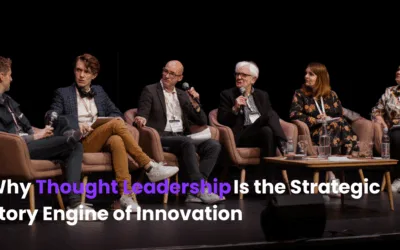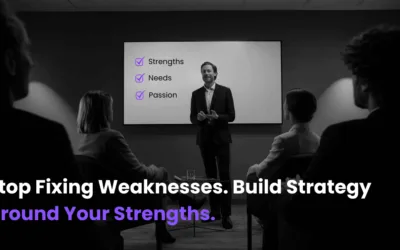We’re living through an AI boom – one filled with buzzwords, demos, and “must-use” tools. Yet if you’re an innovator in government, enterprise, or a fast-scaling startup, the question that really matters is this:
Where does AI actually matter – and how do I know what’s worth doing?
That’s where the Jobs to Be Done (JTBD) framework can help. It’s a practical lens for identifying where AI will drive real value – and where it won’t. In part, this provides us with a sense of the change impact of innovation – and that then drives accountability and impact. Let’s explore.
What Is JTBD, Really?
JTBD is a simple but powerful idea:
People don’t buy products or adopt technology – they “hire” them to get a job done.
These jobs could be:
- Functional (eg “reduce report writing time”)
- Emotional (eg “feel confident leading digital change”)
- Social (eg “be seen as an innovation leader”)
AI succeeds when it helps someone complete a meaningful job better than the status quo. And fails when it doesn’t.
Applying JTBD to AI: A Quick Framework for Innovators
Whether you’re a Policy Pioneer, Innovator in Residence, or Visionary CMO, you can use JTBD thinking to identify where AI is worth exploring.
Here’s how:
1. Start with real problems, not tools
Instead of asking:
“How can we use ChatGPT in our department?”
Ask:
“What are the jobs our teams are struggling to get done today?”
For example:
- “Turn research into actionable insights for execs”
- “Respond to internal queries faster”
- “Create content that actually gets noticed”
These jobs are far more concrete than “use AI.” They’re where AI might belong – not where it’s assumed.
2. Look for “struggling moments”
JTBD shines light on friction:
- Where are people consistently slow, stressed, or stuck?
- What do they complain about or avoid?
These are prime places for AI prototyping.
At Disruptors Co, we’ve helped teams reduce content production time by 70% by applying AI to a clearly struggling moment: manual briefing and copywriting for digital campaigns.
No hype. Just better outcomes.
3. Don’t forget the emotional and social jobs
AI adoption is as much about confidence and perception as capability.
Ask:
- “Who needs to feel confident using AI?”
- “Who needs to be seen as forward-thinking, but is nervous about looking naive?”
For example, executive teams often “hire” AI showcases not for technical depth – but to feel in control of the change they know is coming.
Our AI Executive Workshops are designed for this exact job.
4. Evaluate tools by how well they do the job
The best AI solution might not be the flashiest. It’s the one that:
- Saves time
- Reduces error
- Boosts confidence
- Improves outcomes
Use the JTBD lens to cut through vendor promises and shiny demos:
“How well does this tool help my team get their job done?”
If it’s faster than the current way, reduces friction, or increases impact—it’s a good candidate. If not, it’s shelfware in disguise.
5. Build capability around the job, not the tool
AI capability isn’t about knowing how to prompt – it’s about knowing why to use it.
In our AI Capability Uplift programs, we guide teams to:
- Identify the jobs they do daily
- Test which ones AI can assist with
- Design safe, ethical usage policies around real needs
The result? AI that sticks—because it’s not abstract. It’s embedded in the jobs that matter.
JTBD Turns “AI Hype” into “AI That Helps”
If you want to lead real innovation—not just chase trends—start by asking:
“What’s the job to be done here?”
Let that guide your AI investments, experiments, and capability building.
At Disruptors Co, we call this innovation on purpose—and it’s how we help government teams, enterprises and startups turn bold ideas into real, measurable impact.



